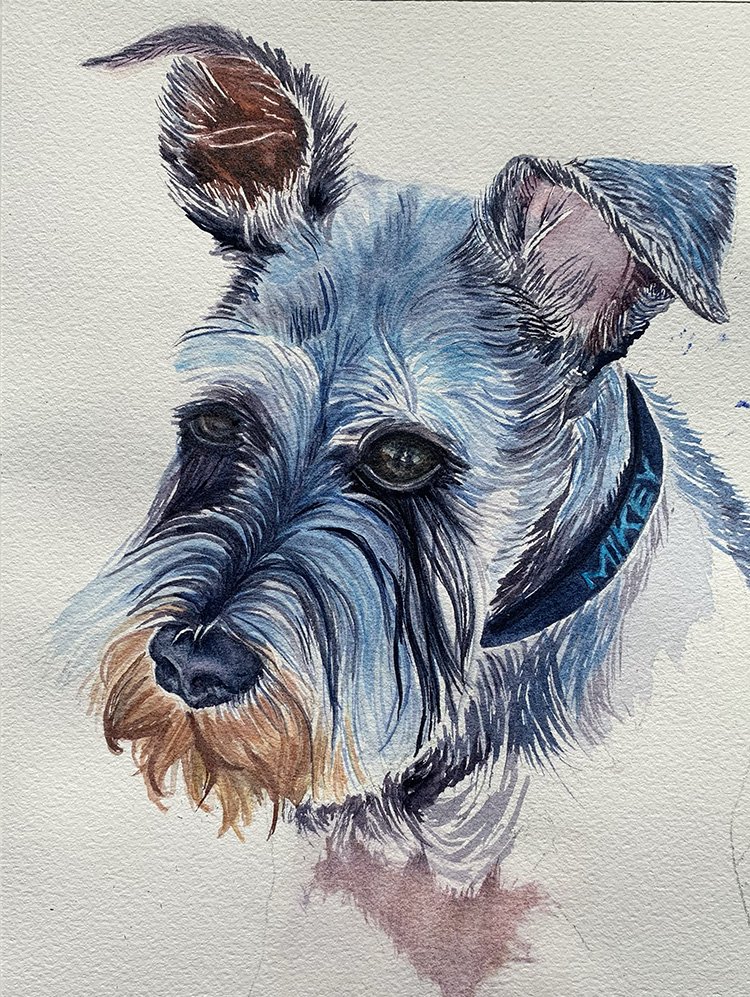Pet Portraits — a glimpse into the life & loves of pets
Each pet portrait, like each pet, is different.
Colorful pet portraits began because I wanted to make playful color choices in all my paintings. I’d found myself faithfully recreating what was before me yet missing the life force of my subject.
The “illusion of reality,” the painting of “realism,” is a tough habit to drop!
I began by painting photos from magazines. I wasn’t painting “for” anyone. This was a learning experience, with no pressure or strings attached. It later became a class I taught to help others infuse more color into their paintings.
What follows is the painting of “Mikey,” a much-loved, “older” schnauzer.
The process of painting YOUR pet begins with your decision to have a portrait painted.
Once a portrait is ordered, you send a photo or two of your pet to me, along with your preference for either a “traditional” portrait, or a “Hawaiian-style,” rainbow portrait.
Your photo is a template for the drawing, the “bones” of the painting. The photo of your pets’ face is enlarged so details are clearly seen.
The portrait always begins with the eyes, nose, and mouth. They must be realistic for you to feel the love in your pet’s eyes — no matter what colors are used for the rest of the painting.
When Mikey’s eyes were enlarged, two figures were clearly reflected in his gaze. It felt important to show them in the final painting as a true testament to Mikey’s love for his “people.”
Watercolor is a delicate medium. Layers upon layers go into creating just the right color. Each layer must dry before the next one can be painted on top.
Most applications of watercolor for pet portraits are added with the paper lying flat. This keeps the colors from running willy-nilly all over the page.
Once the eyes, nose, and mouth are painted, the rest of the face follows.
My rule of thumb is to only paint what I “know” to paint.
This means I pause and look at the painting until I “know” what to do next.
Pausing is as important as painting!
My thinking mind doesn’t decide what to paint, I wait until I feel the urge to paint.
As I paint one area, another area will call to be painted.
Sometimes, an area already painted will call me back for another layer of color.
In this way, I meander around the painting, adding color whenever called.
This isn’t a mysterious process, it’s the result of pausing, looking, then waiting for the impulse to paint.
Being pulled to do something is preferable to being pushed to do something.
This might seem like a subtle difference, but I assure you, it’s really important!
Painting continues as layers upon layers are added to the eyes, nose, and mouth. This ensures the entire painting “comes up together,” feeling congruent.
Thin layers ensure that the paint remains translucent, giving your pet’s portrait a luminous, lively feel.
The background is painted last. Complementary colors are often chosen to reside across from the opposing complement on the body. Two layers are often needed here as well.







